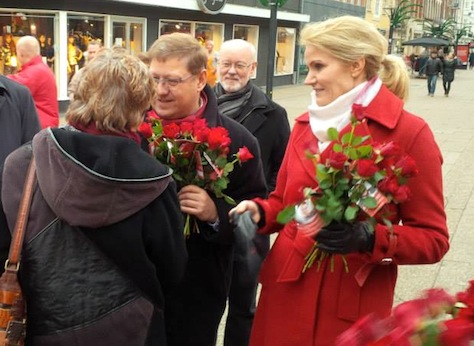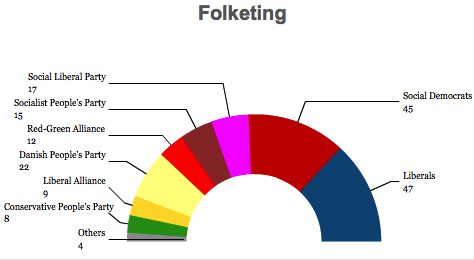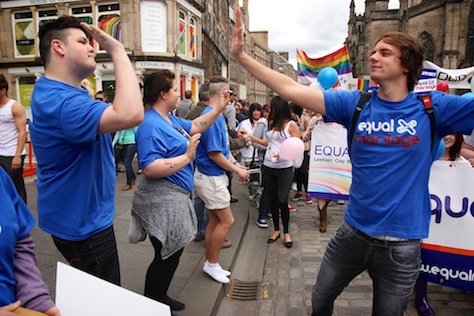A crisis over whether to approve the sale of part of Denmark’s state energy company to Goldman Sachs divides the country’s beleaguered minority government, leaving the first female Danish prime minister and her administration in jeopardy. ![]()
It sounds like an episode of Borgen, the acclaimed television show about Danish political intrigue and the human costs of public office.*
But it was real-life Danish politics last week, when Helle Thorning-Schmidt pushed through a controversial sale of stock amounting to 18% of DONG (Danish Oil and Natural Gas) Energy, the national energy company, to Goldman Sachs, even though nearly seven out of 10 Danish voters oppose the sale and worry that Goldman will hold too much power over management and other key decisions.
Thorning-Schmidt (pictured above) leads the Socialdemokraterne (Social Democrats), the largest center-left party in Denmark. In the September 2011 parliamentary elections, the Social Democrats actually lost a seat. The largest party today in the Danish parliament is Venstre (Liberals, literally the ‘Left’), Denmark’s primary center-right party.
But the strength of other leftist parties in the 179-member Folketing, the Danish parliament, allowed Thorning-Schmidt to pull together a minority government with the coalition support of two additional parties. The first is Det Radikale Venstre (Danish Social Liberal Party, literally the ‘Radical Left’), a centrist liberal party that gained eight seats in the 2011 election. Its leader, Margrethe Vestager, currently serves as deputy prime minister and minister for economic and interior affairs.
The second is the Socialistisk Folkeparti (the Socialist People’s Party), a democratic socialist party that lost seven seats in 2011. Accustomed to opposition, the party joined government only for the first time since 1959, and its leader Villy Søvndal became foreign minister. But Søvndal stepped down in September 2012, due to criticism within the party about the 2011 losses and sniping that he was focusing more on government than on the party leadership. and in the ensuing leadership contest in October 2012, Annette Vilhelmsen defeated Astrid Krag. Though many party leaders supported Krag, Vilhelmsen’s victory represented a triumph for the party’s left wing, though the party never fully united behind Vilhelmsen’s leadership. Vilhelmsen clashed often with her coalition partners over economic policy, and it was Vilhelmsen’s decision to pull the party out of Thorning-Schmidt’s coalition at the end of last week, declaring that it wouldn’t be a part of government ‘at all costs.’ Continue reading How Goldman Sachs nearly collapsed Denmark’s government last week



